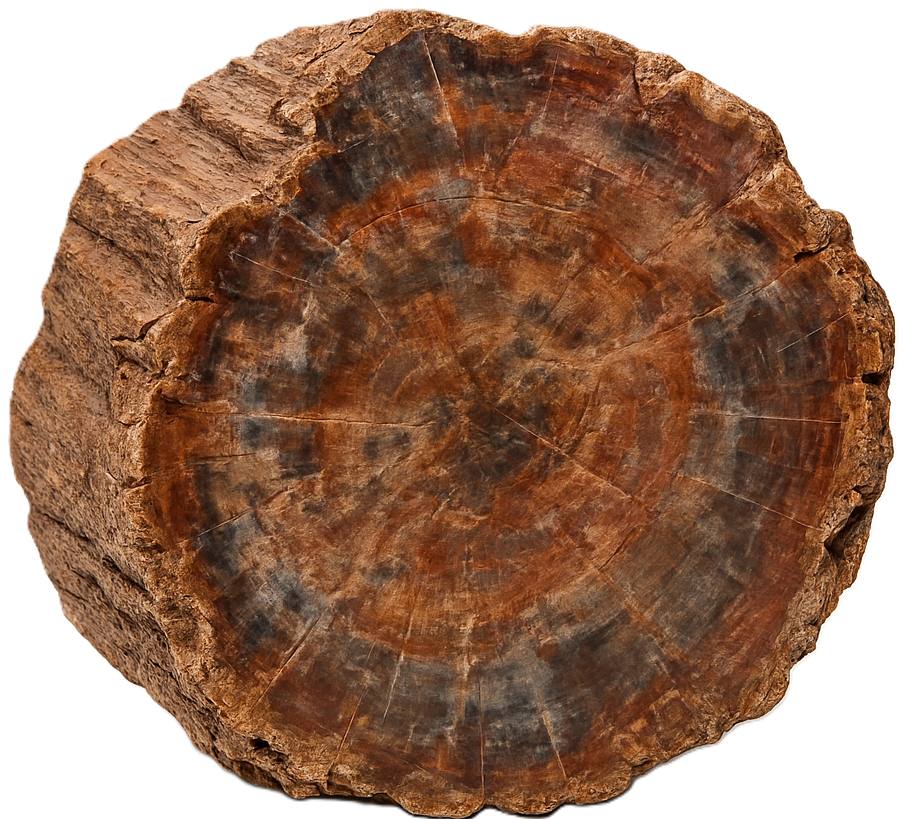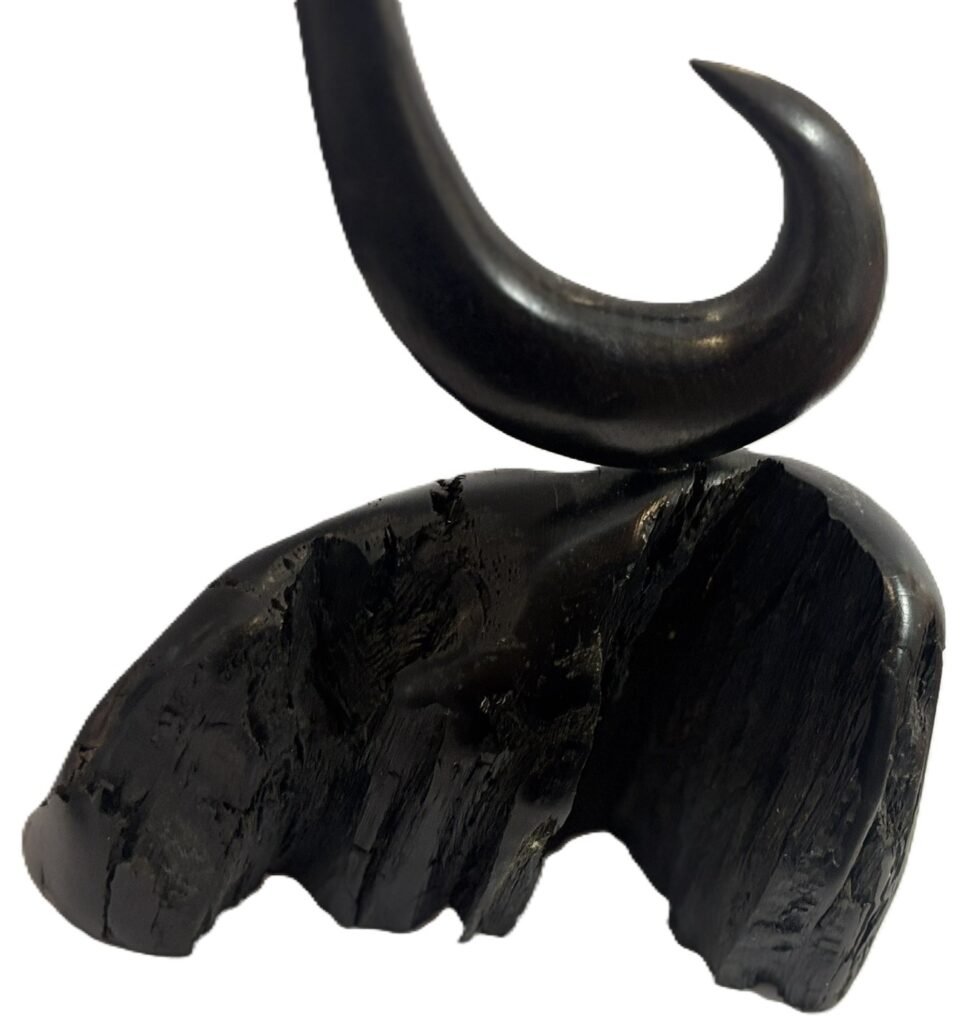Fossilised wood—often referred to as petrified wood—is a captivating material formed through geological processes that transform ancient trees into stone. Revered by scientists, collectors, and spiritual practitioners alike, fossilised wood offers a rare glimpse into prehistoric ecosystems while carrying symbolic and metaphysical resonance.

What Is Fossilised Wood?
Fossilised wood is the preserved remains of trees or woody plants that have undergone mineralisation over millions of years. This process typically involves:
- Permineralisation: Mineral-rich water saturates the wood, replacing organic material with silica, calcite, pyrite, or other minerals.
- Replacement: The plant’s cellular structure is gradually substituted with stone, retaining its original form and grain.
The result is a durable, rock-like specimen that often displays vivid colours and intricate patterns, depending on the minerals involved.
Types of Fossilised Wood
Fossilised wood occurs in several distinct forms:
- Petrified Wood: Fully mineralised and stone-like, often found in volcanic ash beds or floodplains.
- Mummified Wood: Preserved without mineralisation, retaining original cells and tissues; typically found in cold or arid environments.
- Submerged Forests: Tree remains submerged due to marine transgression, useful in studying post-glacial sea level changes.
Botanical classification often uses terms like Araucarioxylon (similar to Araucaria), Palmoxylon (palm-like), or Castanoxylon (chestnut-like), reflecting presumed affinities.
Historical and Scientific Significance
Fossilised wood has long fascinated geologists and palaeobotanists. Notable examples include:
- The Petrified Forest National Park (Arizona): A vast deposit of Late Triassic fossil wood, showcasing vibrant mineralisation.
- Craigleith Quarry (Scotland): Home to Pitys withamii, a 330-million-year-old fossil tree from the Carboniferous period.
- Axel Heiberg Island (Canada): Site of mummified forests offering insights into ancient climate conditions.
These specimens help reconstruct prehistoric environments, revealing vegetation types, climate shifts, and ecological dynamics.
Uses and Applications
Fossilised wood is valued across disciplines:
- Scientific Research: Used in palaeobotany and climate studies.
- Collecting and Display: Popular among fossil collectors and museums.
- Jewellery and Sculpture: Carved into decorative items, often polished to reveal natural grain.
- Interior Design: Used in tabletops, tiles, and ornamental features.
Its durability and aesthetic appeal make it a sought-after material in both academic and artistic contexts.
Folklore, Superstition, and Symbolism
Throughout history, fossilised wood has been imbued with symbolic meaning:
- Protection and Grounding: Believed to stabilise emotions and anchor spiritual energy.
- Ancestral Memory: Thought to carry the wisdom of ancient Earth, aiding in past-life recall.
- Transformation: Symbolises endurance and the ability to evolve through adversity.
In some traditions, fossilised wood was buried near homes to ward off negative energies or used in rituals to connect with nature spirits.
Mystical Properties and Zodiac Associations
In metaphysical practice, fossilised wood is considered a grounding stone:
- Chakra Alignment: Resonates with the root chakra, promoting stability and connection to Earth.
- Healing Energy: Used in meditation to release emotional blockages and foster resilience.
- Zodiac Links:
- Virgo: Enhances patience and practicality.
- Capricorn: Supports long-term growth and discipline.
- Taurus: Deepens connection to nature and physical well-being.
Practitioners often use fossilised wood in crystal grids, talismans, or energy work to channel ancient wisdom and promote healing.
Interesting Facts
- Fossilised wood can contain up to 40 different minerals, with silica being the most common.
- Some specimens retain bark and growth rings, allowing dendrological analysis.
- The oldest known fossilised wood dates back over 300 million years.
- Colours range from earthy browns to vibrant reds, blues, and greens, depending on mineral content.

Fossilised wood
Ancient and enduring, fossilised wood preserves the grain and form of prehistoric trees—ideal for collectors, décor, and connecting with Earth’s deep history.
